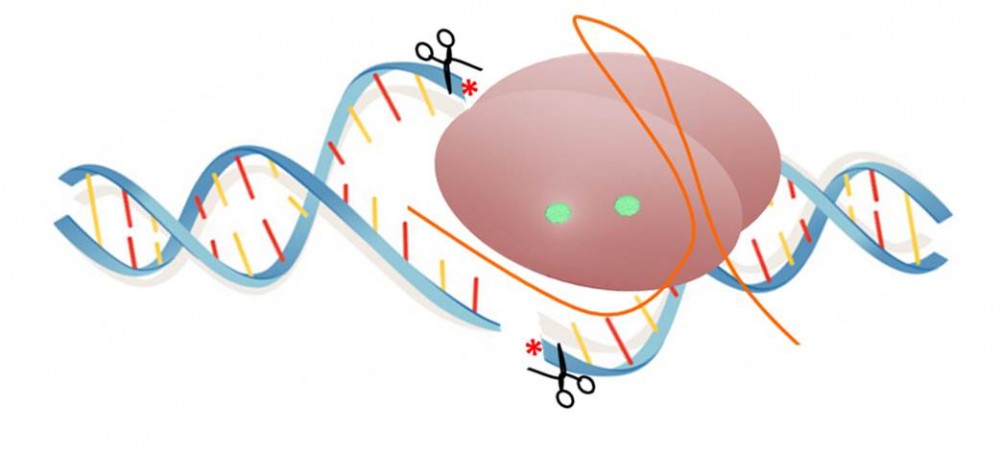
CRISPR/Cas genome-editing technologies are a fascinating set of tools for modifying mammalian genomes to create genetically engineered research models in record time. In an earlier post we went through 10 essential considerations for creating mouse models with CRISPR/Cas9. Here we will go through the basics of how to use CRISPR/Cas to design research models with different types of targeted mutations.
1. Knockout (KO) model: quick and dirty gene disruption
The Cas9 nuclease contains two active sites. When both sites are functional, Cas9, in combination with a guiding RNA molecule, causes targeted double-strand breaks (DSBs) in genomic DNA. In this scenario, the DSBs are repaired by the “quick and dirty” repair pathway known as non-homologous end joining (NHEJ). As a result, random insertions/deletions typically occur at the DSB site.
Frequently insertions/deletions alter the open reading frame (ORF) of the target gene, disrupting the gene function downstream of the DSB.
sgRNA + Cas9 = Disrupted gene function
2. Knock-in (KI) models via homologous recombination- mediated DNA repair
In the presence of a donor DNA molecule with homology to the target region, the CRISPR system can also be used to introduce specific nucleotide modifications into a sequence of interest. The idea here is that the donor DNA acts as a DNA repair template that will be inserted at the DSB during homologous recombination (HR).
If you are looking to insert small DNA sequences (<200bp), using a DNA oligonucleotide as donor DNA should do the trick. This approach will allow you, for example, to insert gene tags, loxP sites for conditional models and stop codons in specific functional regions.
sgRNA + Cas9 + DNA oligonucleotide = Small KI
On the other hand, if you are looking to insert larger DNA sequences (>200bp), using a DNA vector may work best. This approach will allow you to insert luminescent or fluorescent reporter genes in specific target sites.
sgRNA + Cas9 + DNA vector = Large KI
3. Activate or repress gene expression
The Cas9 system also can be used to control gene expression. How? You can fuse transcriptional regulators to a modified Cas9 protein with inactivated nuclease domains, eliminating its ability to cut DNA but not its ability to associate to sgRNA and to interact with specific promoter elements targeted by the sgRNA. Using this strategy, Cas9 is able to deliver transcriptional factors to specific genes and regulate their expression.
sgRNA + deactivated Cas9 + transcription activator = gene on
sgRNA + deactivated Cas9 + transcription repressor = gene off
Sound simple? It is if your lab is proficient in molecular biology and is experienced with microinjecting constructs into early stage embryos and in transferring and raising the embryos in surrogate females.
These and other variations of the CRISPR/Cas system are unleashing a long list of possibilities. Need to restore a defective gene domain? Need to fix a deleterious point mutation? CRISPR/Cas may be just the strategy you’ve been waiting for to reach your research goals.
Think what could be done to treat, for example, particular oncogenes or hereditary monogenic diseases, just to name a few. The CRISPR/Cas system is amazingly versatile and has proven to edit the genome effectively not only in mice and flies, but also in monkeys and, yes, in human cultured cells.